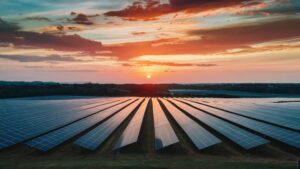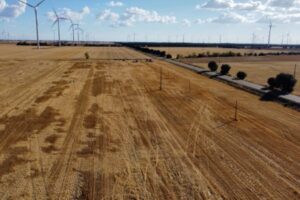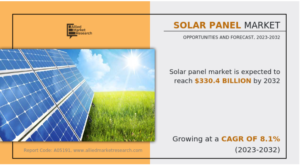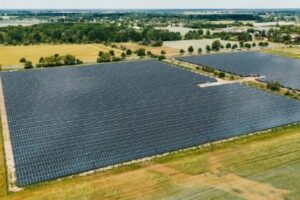Evolving regulations for wind turbine end-of-life
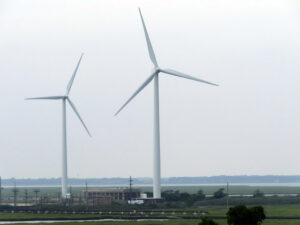

Land-based windmills in Atlantic City turn on July 20, 2023. On Aug. 4, a German wind power company and a New York utility applied for permission to build an offshore wind farm off the coast of Long Beach Island in New Jersey, but far enough out to sea that it could not be seen from shore. (AP Photo/Wayne Parry)
With careful planning, wind is a renewable energy source that can be employed with a lower environmental impact than traditional fossil fuels. Wind turbines produce no harmful emissions during operation and require no water for cooling. However, the challenge arises when wind turbine blades, lasting around 20 to 30 years, need replacement and proper disposal or recycling at the end-of-use stage.
Once a wind turbine reaches the end of its operational life or becomes outdated, it must be decommissioned and removed from the site. As of the first quarter of 2023, data from the United States Geological Survey reveals the existence of 72,731 wind turbines spread across 43 states, encompassing territories such as Guam and Puerto Rico.
According to the latest introduced legislation, U.S. representatives from Colorado are proposing that wind energy companies should be required to remove decommissioned wind turbines from leased land before becoming eligible for federal tax credits.
Managing wind turbine waste: rise of regulations
As wind turbines reach the end of their operational lives, the disposal and recycling of wind turbine blades can become a complex issue. These blades, often made from composite materials like carbon fiber or glass, are challenging to recycle using conventional methods, leading to considerable waste.
Due to their large size and durable composition, finding sustainable solutions for handling used wind turbines is crucial. Landfill disposal has been a common approach, but this method presents a different set of environmental and lifecycle cost challenges.
Wind turbines have an operational lifespan of several decades, so waste management during decommissioning is a long-term consideration. Waste regulation aims to address concerns related to the disposal, recycling, and environmental impact of wind turbine components at the end of their useful life.
Because the wind energy industry is relatively young, U.S. wind farm operators and policymakers have yet to encounter decommissioning challenges. Several states are starting to develop specific waste regulations for wind turbines.
One of them is Texas, which holds the top position among all states regarding the number of wind turbines and boasts the highest installed capacity, measured in megawatts. With the rapid growth of Texas wind farms, the issue of handling wind turbine waste, particularly the disposal and recycling of wind turbine blades, has become a significant concern.
Texas has seen efforts to develop more sustainable wind turbine waste management solutions. Some initiatives focus on innovative recycling technologies, exploring ways to break down or repurpose the composite materials used in wind turbines. The Texas legislature defines decommissioning requirements on any person who leases property from a landowner to operate a wind farm. The state’s efforts reflect the recognition that addressing wind turbine waste is essential for the sustainability of the wind energy sector and minimizing the environmental footprint of renewable energy infrastructure as a whole.
As another example, wind turbine waste management in Oklahoma shares similarities with other states with a significant wind energy presence but has unique challenges and initiatives. Oklahoma defines steps related to the proper decommissioning of a wind energy facility and the requirement for energy companies to remove decommissioned wind turbines from leased land. Oklahoma is also actively exploring various strategies for more responsible wind turbine waste management.
Waste regulation for wind turbines is essential for the continued growth and sustainability of wind energy as a renewable energy source, as it helps mitigate potential negative impacts on the environment while maximizing the benefits of clean energy generation.
New legislation in Colorado
Colorado has been investing in wind energy projects, and its wind capacity has steadily increased over the years. Naturally, wind turbines are predominantly installed in regions with strong and consistent winds, such as the eastern plains and southern parts of the state.
*Map shows the location of the operating wind farms in Colorado
According to the EIA’s latest available information, Colorado has an installed capacity of around 5,200 MW of wind energy. Their wind farms include nearly 2,800 wind turbines.
The graphs below show the growth in wind capacity within the state for the last 10 years.
Colorado’s Wind Energy for the last 10 years. Source: FirmoGraphs Power Mart, including EIA data, created in Qlik Sense
Colorado lawmakers have introduced a new legislative proposal that mandates wind energy companies to be responsible for the removal of decommissioned wind turbines within the state.
The bill aims to modify the Internal Revenue Code, making it mandatory for energy companies to remove decommissioned wind turbines from leased land to be eligible for federal tax credits. Currently, there is no requirement for wind energy companies to take responsibility for removing decommissioned wind turbines from leased land. As a result, property owners, often farmers and ranchers, bear the burden of turbine removal. This shift in legislation underscores the growing importance of addressing the challenges associated with renewable energy infrastructure at the end of its useful life.
